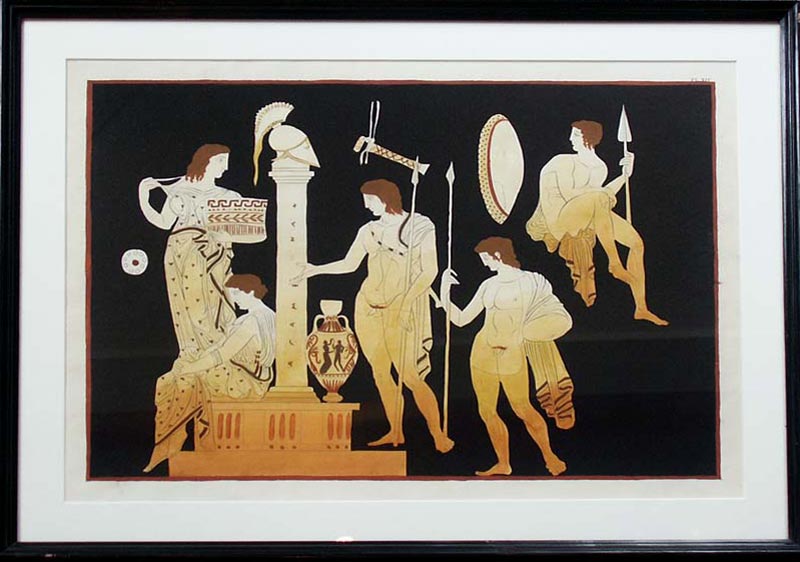



Johan Tischbein after William HAMILTON A Group of Six Classical Vase Designs Copper plate engravings in later hand colour from an early C19th edition of William Hamilton’s “Collection of Etruscan, Greek and Roman Antiquities from the Cabinet of The Honble. W. Hamilton”, published in Florence by Johan Tischbein between 1801 and1808. It was in 1764 that Sir William Hamilton and his first wife, Catherine,
arrived in Naples to take up the appointment as British Envoy Extraordinary
to the Bourbon Court of King Ferdinand IV. They soon established themselves
as leaders of the fashionable and international community based in Naples
and their home at the Palazzo Sessa became an essential destination for
those embarking upon the Grand Tour. One of Hamilton’s great passions
was for archaeology and during this period it was still relatively easy
to acquire a cabinet of archaeological curiosities and artefacts. Although
he complained to the king about the way in which the sites at Pompeii
and Herculaneum were being plundered he still managed to acquire many
items for his own private collection. Hamilton’s first collection
was shipped to London and sold to The British Museum in 1772 where it
formed the basis for what was to become the Greek and Roman Galleries.
The arrival of these vases in England and the publication of Hamilton’s
lavish work in 1767 heightened public interest in the design of classical
vases and led to a huge increase in the popularity of this style, best
exemplified by the pottery of Josiah Wedgwood. The costs involved in the
publication of Hamilton’s magnificent work were huge and as a consequence
only the very wealthy could afford the volumes. The publication left Hamilton
£6000 in debt. To recoup some of his losses Hamilton produced a
second series of plates and published these between 1791 and 1795. Many
of the vases in this second collection were sadly lost at sea on their
way back to London when the Colossus sank off the Scilly Isles. £2,800 |